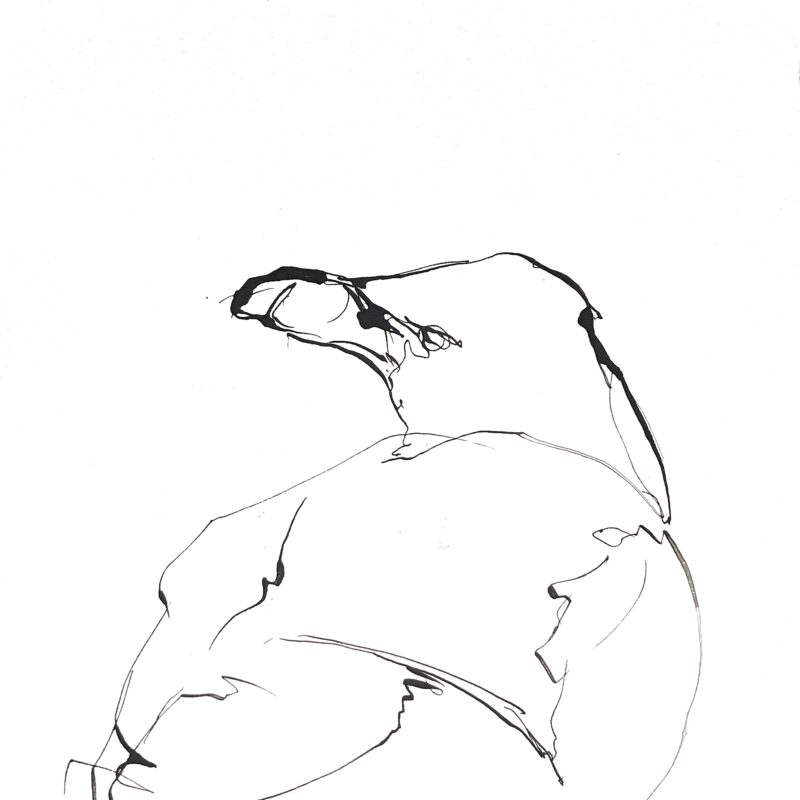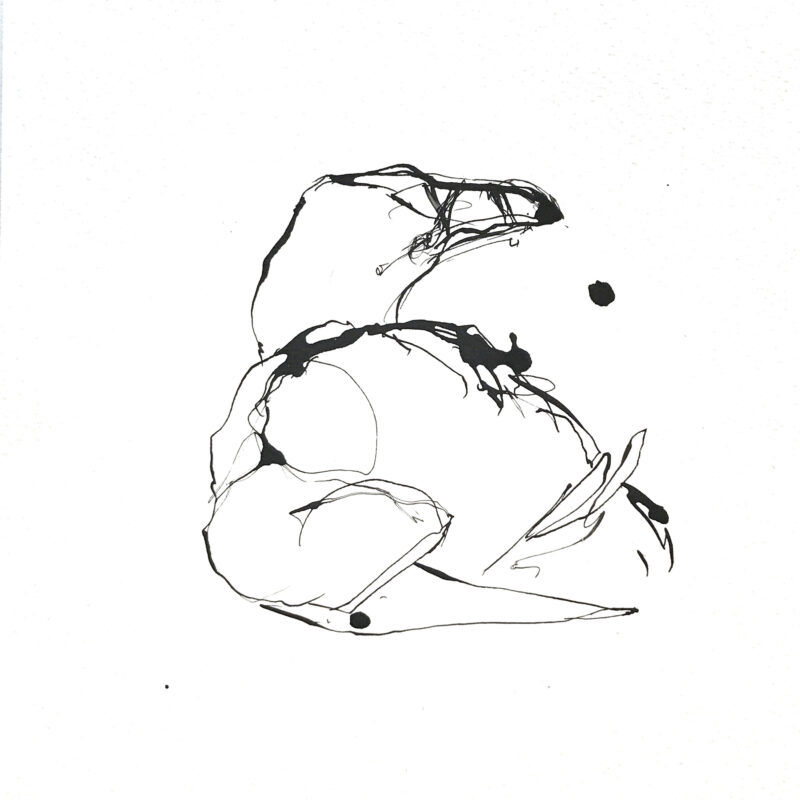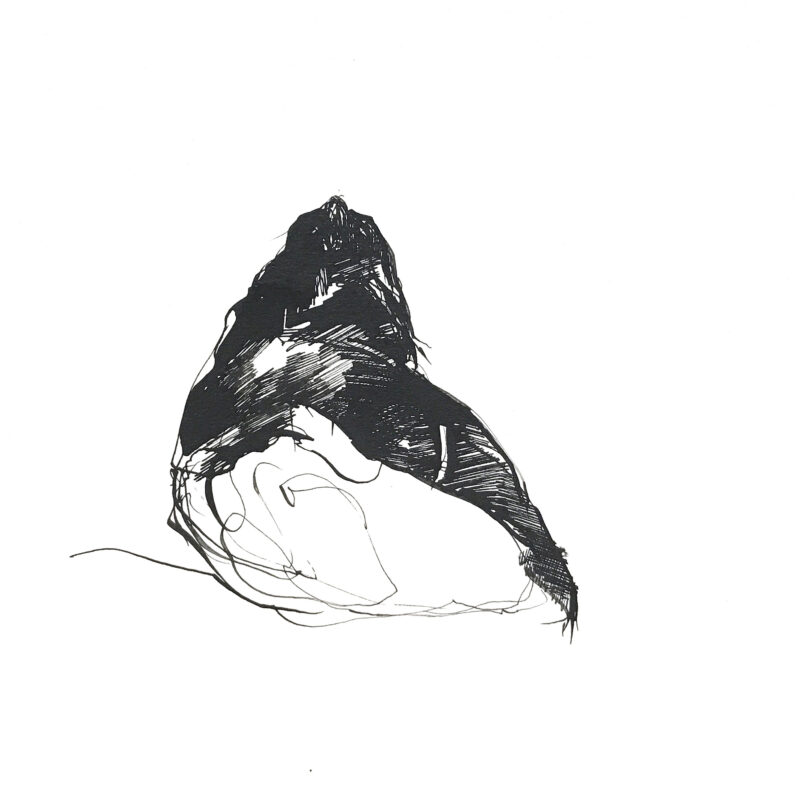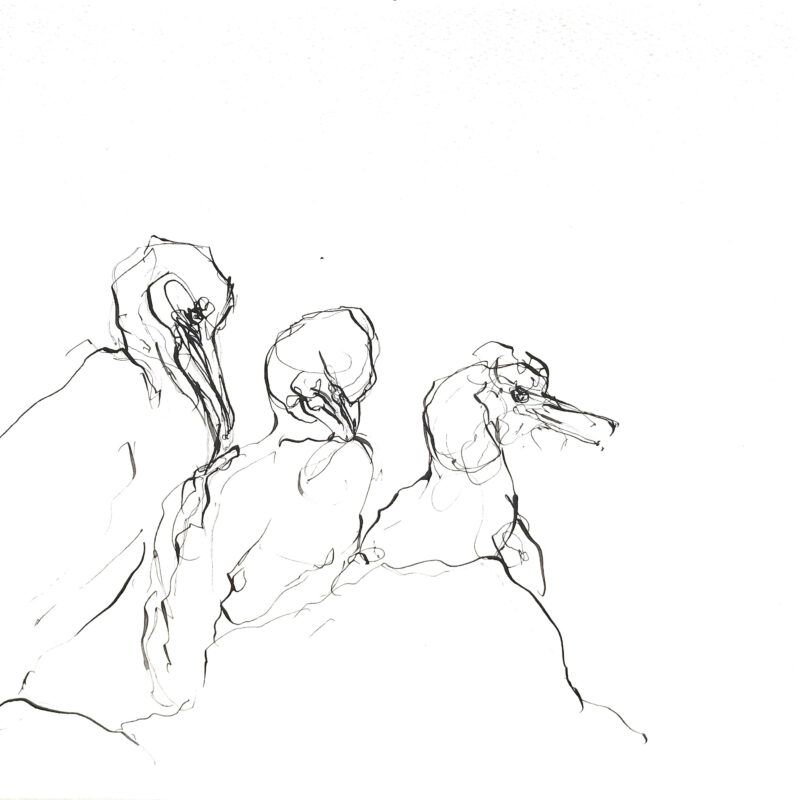Sally Newton - John Busby Seabird Drawing Course 2022 Bursary Report
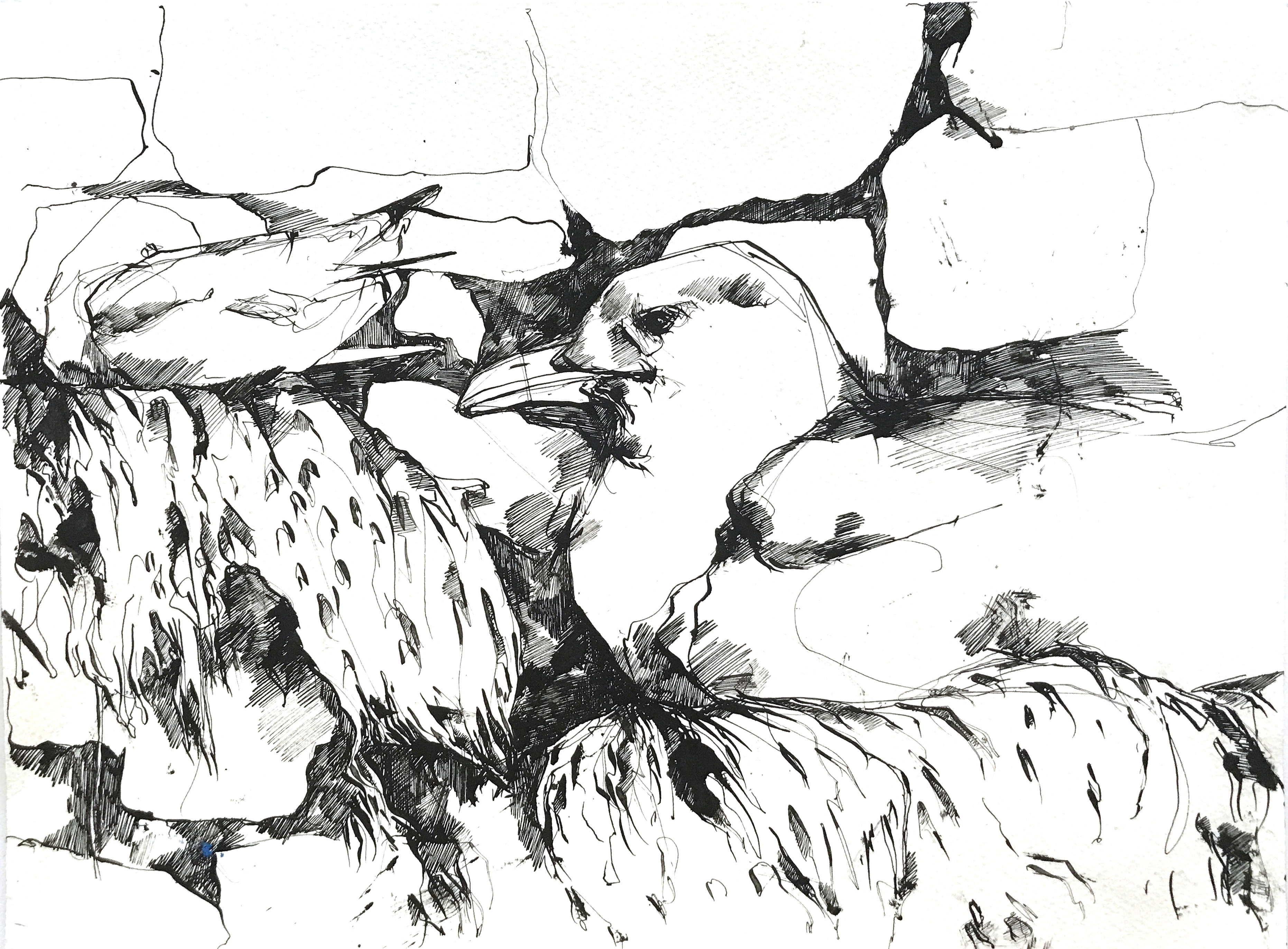
Approaching the final stage of my journey, I thought of the artists’ own travels towards the Firth, much like many of the seabirds we were soon to meet. I felt an affinity with their world, which would only become more pronounced as the week progressed. I met fellow first-timers, as well as the regulars who return to the course again and again. I wanted to ask ‘what more do you hope to take from the course?’ and ‘what advice can you share?’, but it became more obvious that evening, that the beauty of the course is in the unknown and unexpected. An element of struggle was welcomed by everyone and I settled into a recognition that such questions don’t necessarily need answers on this course. Nik Pollard advised that the key to a successful naturalist drawing is ‘integrity’. To draw nature convincingly requires an observed and deep understanding of the anatomy and behaviour of the subject. A brief observation but one which would underpin the week ahead. We first headed to Dunbar Harbour to study the Kittiwake colony. Drawings of their delicate, distinct beaks became different, unintended shapes on the page – becoming mallards and herring gulls unintentionally, with each mark fighting to bring them back again. My head became flooded with thoughts of how to tackle the subjects. I remembered Nik’s advice, but also my mind queried ‘but is it art?’ in regards to each drawing.
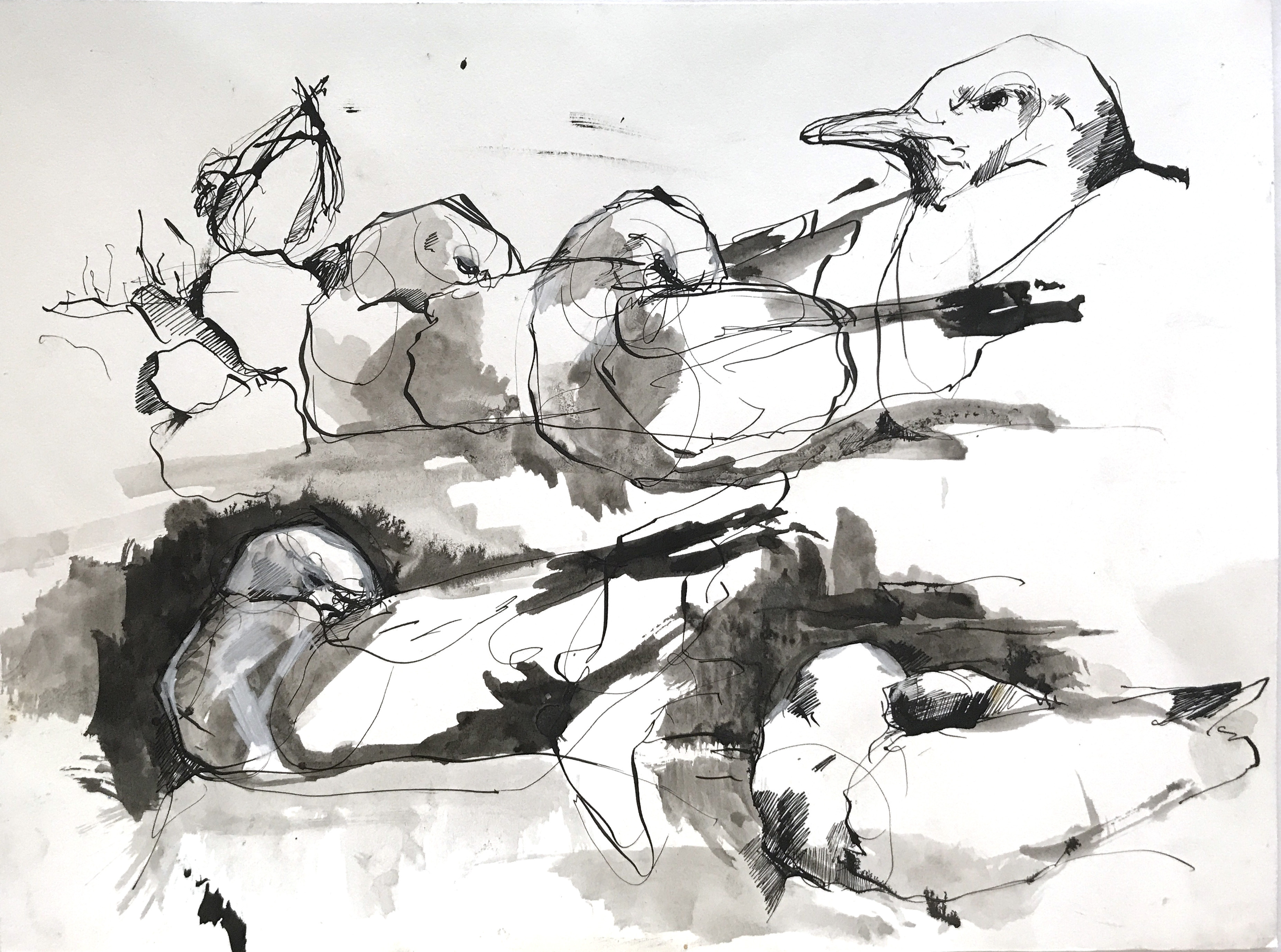
Monday brought a whole new perspective as we had the privileged experience of landing on Fidra. Sailing past the Bass Rock, out of bounds due to avian flu, we all felt moved as we thought of the devastating effect it would have on the seabirds. An effect that we sadly saw more of during the week. On Fidra, we started with a profound warm-up exercise of just listening, without drawing. A perfect fit for the sensory intensity of the island. I considered how I might do justice to the frenetic and dynamic energy of the place. Kittie Jones helpfully suggested trying to work bigger, which freed up the mark-making. Darren Woodhead gave an excellent lecture on anatomy, studying how the wings move in flight especially. Nik’s earlier comment became ever clearer. Truly understanding anatomy leads the way to freedom in artistic expression.
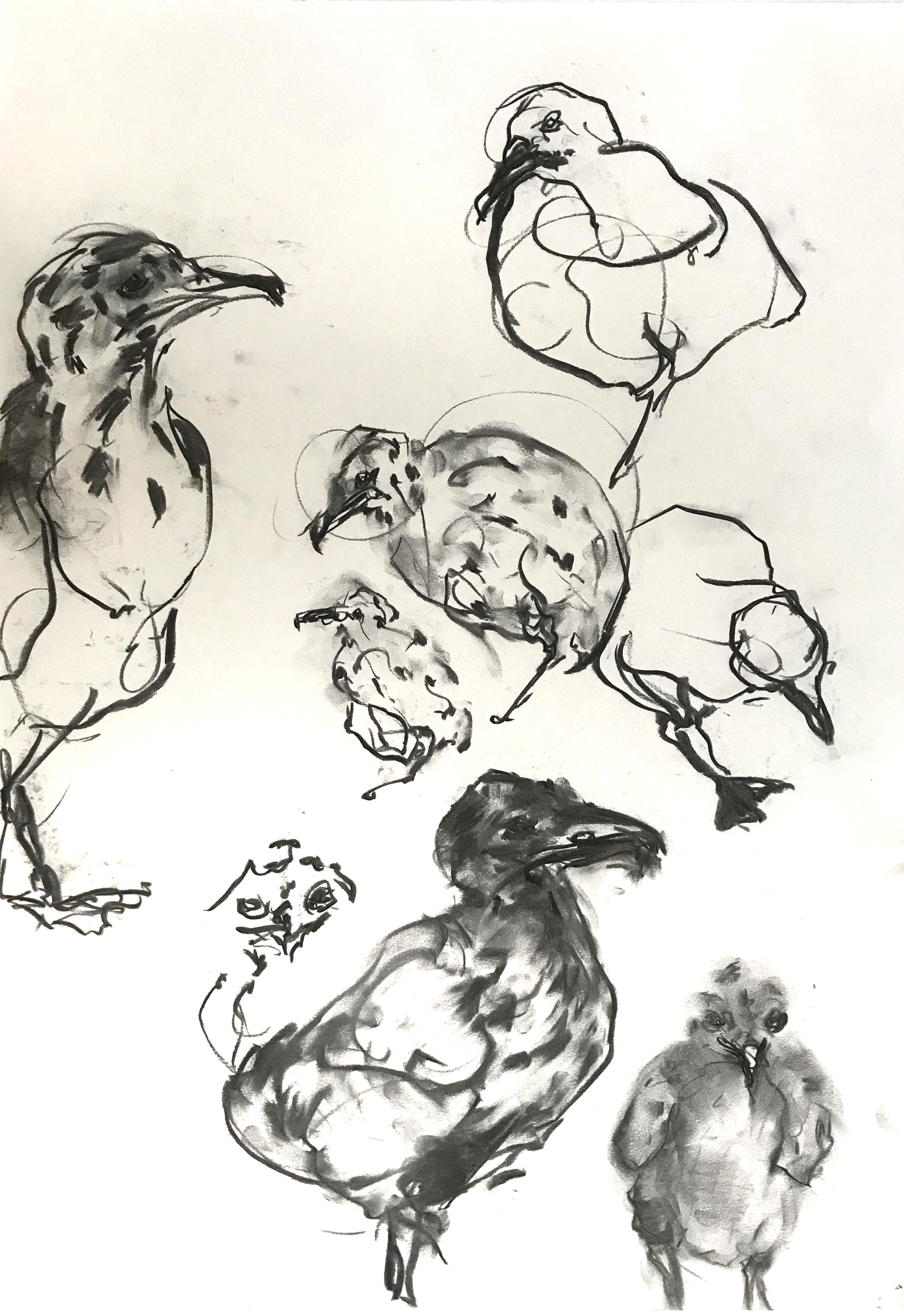
A trip to John Busby’s studio the next day further cemented this and we all felt humbled by his seemingly effortless ability to capture bird behaviour and stature in a simple stroke. The question of what good naturalist art is continued to chase me during the week. Speaking to Darren, he suggested that it is the learning which is important; it is not the pressure of the final piece but the excitement to understand. It was such an important distinction to make and helped me reframe how I thought of the remaining time. I enthusiastically studied the anatomy of the Shags at Dunbar Harbour, before heading again to Fidra. My drawings became looser and more confident, underpinned by a deeper knowing of where the anatomy lies in different positions, rather than relying on my own observation only.
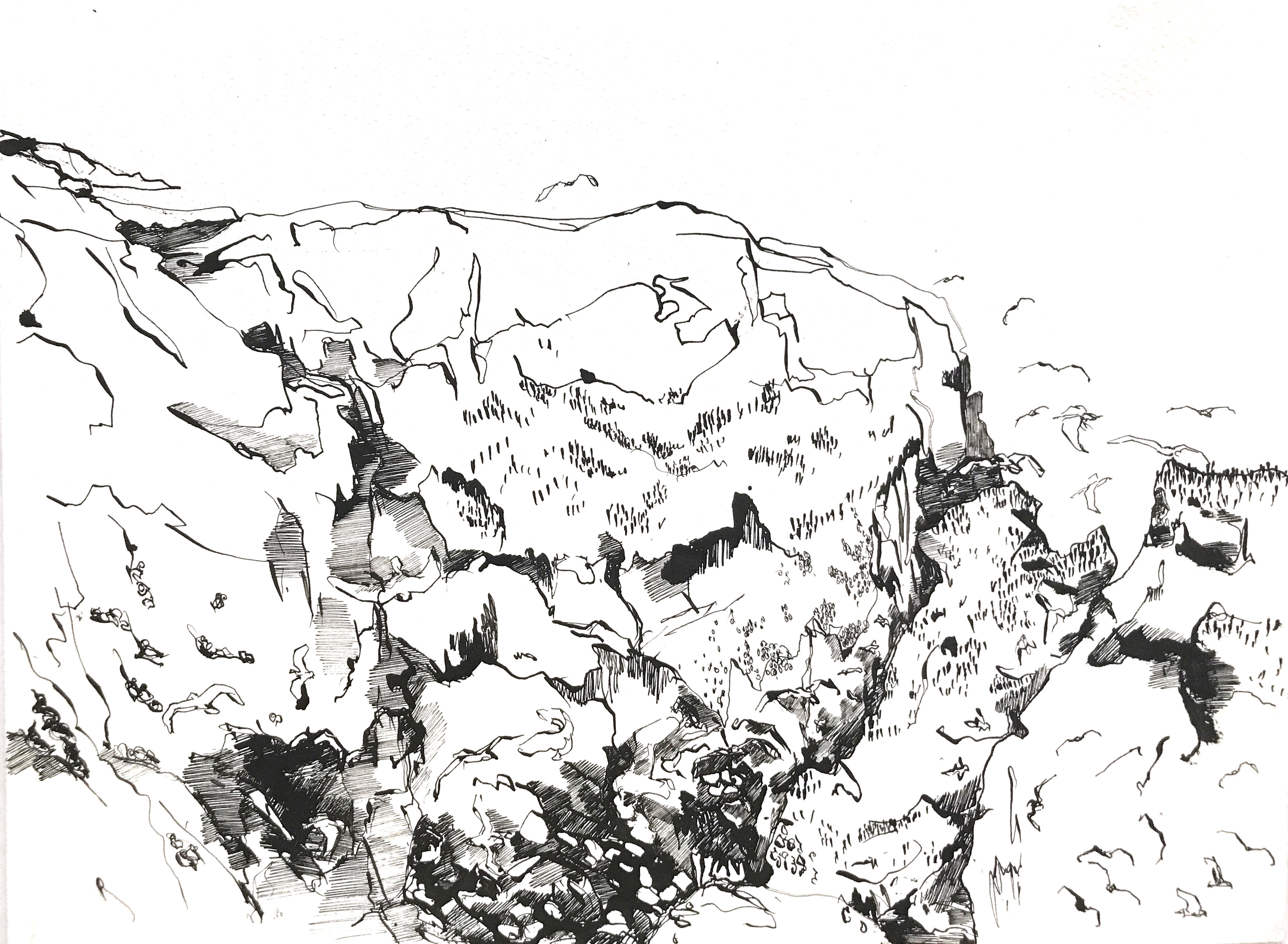
I had so many lightbulb moments during the week and am truly grateful that the SWLA offered me a bursary to attend, which made my attendance possible. I was so grateful for the support of my colleagues who shared work and comments every day. As for the question about what more there is to learn – everything! I’d love to return and build on the knowledge I have started to gain, in such a magical place, alongside a wonderful group of artists and tutors. Thanks Kittie, Nik and Darren!
